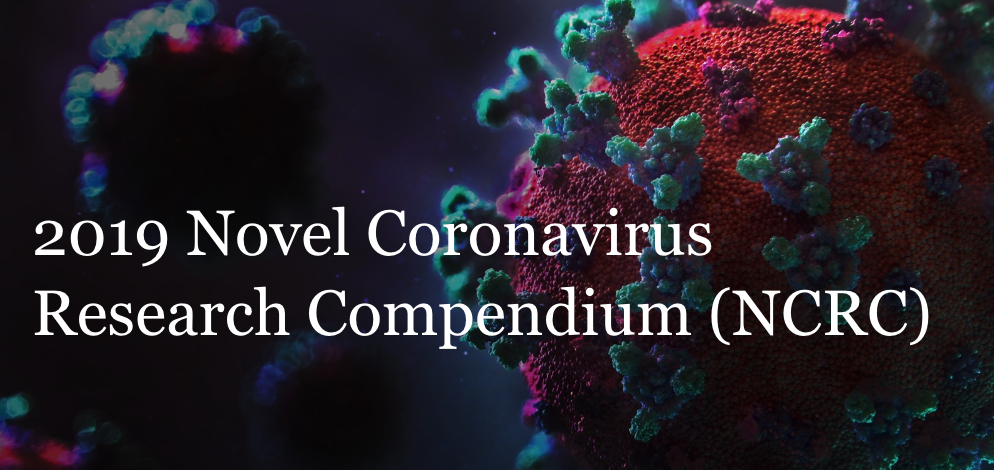Genomics and epidemiology of the P.1 SARS-CoV-2 lineage in Manaus, Brazil
This article has been Reviewed by the following groups
Discuss this preprint
Start a discussion What are Sciety discussions?Listed in
- Evaluated articles (ScreenIT)
- Evaluated articles (NCRC)
- High interest articles (NCRC)
Abstract
Despite an extensive network of primary care availability, Brazil has suffered profoundly during the severe acute respiratory syndrome coronavirus 2 (SARS-CoV-2) pandemic. Using daily data from state health offices, Castro et al. analyzed the pattern of spread of COVID-19 cases and deaths in the country from February to October 2020. Clusters of deaths before cases became apparent indicated unmitigated spread. SARS-CoV-2 circulated undetected in Brazil for more than a month as it spread north from Sã o Paulo. In Manaus, transmission reached unprecedented levels after a momentary respite in mid-2020. Faria et al. tracked the evolution of a new, more aggressive lineage called P.1, which has 17 mutations, including three (K417T, E484K, and N501Y) in the spike protein. After a period of accelerated evolution, this variant emerged in Brazil during November 2020. Coupled with the emergence of P.1, disease spread was accelerated by stark local inequalities and political upheaval, which compromised a prompt federal response.
Science , abh1558 and abh2644, this issue p. 821 and p. 815
Article activity feed
-
-

Our take
This study, available as a preprint and thus not yet peer-reviewed, documented the emergence of the P.1 variant of concern in Manaus, Brazil and the wave of COVID-19 infections associated with its spread. The authors demonstrate that this variant is likely more transmissible than other lineages circulating locally, and presented several hypotheses for why this variant may be more transmissible. The paper demonstrated that genomic surveillance is crucial to the detection of new SARS-CoV-2 variants of concern. Further studies will be needed to understand the cause of this increased transmissibility, which may be useful in curtailing the variant’s spread.
Study design
other
Study population and setting
This study analyzed SARS-CoV-2 genomes from 184 samples from patients seeking COVID-19 testing …
Our take
This study, available as a preprint and thus not yet peer-reviewed, documented the emergence of the P.1 variant of concern in Manaus, Brazil and the wave of COVID-19 infections associated with its spread. The authors demonstrate that this variant is likely more transmissible than other lineages circulating locally, and presented several hypotheses for why this variant may be more transmissible. The paper demonstrated that genomic surveillance is crucial to the detection of new SARS-CoV-2 variants of concern. Further studies will be needed to understand the cause of this increased transmissibility, which may be useful in curtailing the variant’s spread.
Study design
other
Study population and setting
This study analyzed SARS-CoV-2 genomes from 184 samples from patients seeking COVID-19 testing in Manaus, Brazil, with the goal of understanding the second wave of disease in the region. The 184 genomes were derived from 436 PCR-confirmed or suspected SARS-CoV-2 samples collected between November 1, 2020 and January 9, 2021, and these sequences were analyzed alongside publicly available genomes from Brazil. The authors also used a larger sample of 942 samples from Brazil for which quantitative RT-PCR data were available (cycle threshold [Ct] values) to explore potential viral load differences between sequences belonging to the P.1 lineage identified in Manaus and other virus lineages. Finally, the authors used mobility data (airline data from Brazil’s Civil Aviation Agency and cell phone data from In Loco) to explore movement of the P.1 lineage, and epidemiological data such as death records (from a hospitalization database) to model the transmission dynamics of P.1 and non-P.1 virus.
Summary of main findings
The authors found that the second wave of COVID-19 in Manaus, Brazil was associated with the emergence and spread of a new SARS-CoV-2 lineage of concern: P.1. This lineage contains 17 amino acid changes compared to the Wuhan-Hu-1 reference genome, including 10 mutations in the spike protein, and is a descendent of lineage B.1.1.128, which was detected in Brazil in March 2020. The data presented in this study suggest the P.1 lineage emerged approximately one month prior to the resurgence of COVID-19 in Manaus, which supports the hypothesis that the second wave of disease was associated with the new variant. They also found evidence that this variant likely emerged in Manaus, and that the variant spread from Amazonas (the state in which Manaus is located) into Brazil’s southeastern states, a finding supported by both genomic and air travel data. Mathematical modeling showed that virus belonging to the P.1 lineage is likely 1.4–2.2 times more transmissible than local non-P1 lineages, though these results are not generalizable to other settings (since the authors were only able to compare to the other lineages circulating locally). To explain variations in transmissibility, the authors investigated viral Ct values over time, and found that increased transmissibility of P.1 virus could be due to higher viral loads or longer infection, though this finding was inconclusive. The authors also hypothesized that mutations in the receptor binding domain that are present in the P.1 lineage (as well as the B.1.351 lineage of concern) could improve host cell entry, but they are not able to confirm this hypothesis.
Study strengths
The authors performed robust phylogenetic analyses of SARS-CoV-2 genomes from Brazil, which allowed them to estimate the date and location of emergence of theP.1 variant. The availability of epidemiological and mobility data allowed them to corroborate their findings, lending additional certainty to their conclusions.
Limitations
As the authors point out, their observation of increased transmission potential of the P.1 lineage is specific to the local context – without using a more global dataset, they are not able to make more general conclusions about the transmissibility of the variant. Similarly, not enough data were presented on Ct values (e.g., minimal details on where these samples were from, no lineage information available for the majority of samples, no data presented on what day of infection each sample was tested) to understand if viral loads were truly higher in virus belonging to the P.1 lineage.
Value added
This study documents the emergence of the P.1 variant of concern and describes a large outbreak associated with this new variant. It highlights the importance of tracking these variants and the need for further studies to characterize transmissibility of the variant compared to other circulating lineages, both in Brazil and worldwide.
-

SciScore for 10.1101/2021.02.26.21252554: (What is this?)
Please note, not all rigor criteria are appropriate for all manuscripts.
Table 1: Rigor
Institutional Review Board Statement not detected. Randomization not detected. Blinding not detected. Power Analysis not detected. Sex as a biological variable not detected. Table 2: Resources
Software and Algorithms Sentences Resources Materials and Methods: Methodssuggested: NoneResults from OddPub: Thank you for sharing your code and data.
Results from LimitationRecognizer: An explicit section about the limitations of the techniques employed in this study was not found. We encourage authors to address study limitations.Results from TrialIdentifier: No clinical trial numbers were referenced.
Results from Barzooka: We did not find any issues relating to the usage of bar graphs.
Results from JetFighter: We did …
SciScore for 10.1101/2021.02.26.21252554: (What is this?)
Please note, not all rigor criteria are appropriate for all manuscripts.
Table 1: Rigor
Institutional Review Board Statement not detected. Randomization not detected. Blinding not detected. Power Analysis not detected. Sex as a biological variable not detected. Table 2: Resources
Software and Algorithms Sentences Resources Materials and Methods: Methodssuggested: NoneResults from OddPub: Thank you for sharing your code and data.
Results from LimitationRecognizer: An explicit section about the limitations of the techniques employed in this study was not found. We encourage authors to address study limitations.Results from TrialIdentifier: No clinical trial numbers were referenced.
Results from Barzooka: We did not find any issues relating to the usage of bar graphs.
Results from JetFighter: We did not find any issues relating to colormaps.
Results from rtransparent:- Thank you for including a conflict of interest statement. Authors are encouraged to include this statement when submitting to a journal.
- Thank you for including a funding statement. Authors are encouraged to include this statement when submitting to a journal.
- No protocol registration statement was detected.
-


